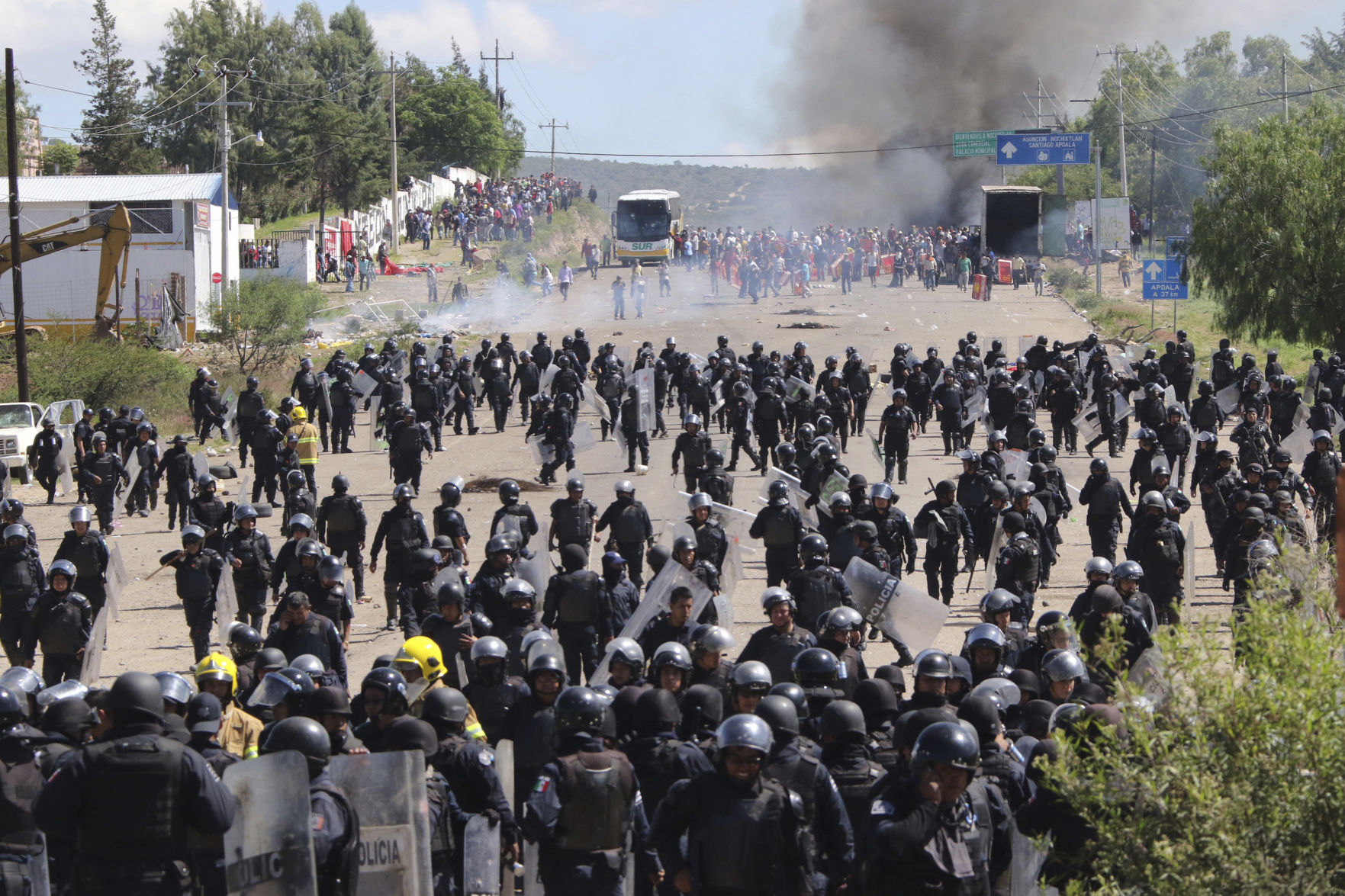MEXICO CITY (AP) — A poorly planned and executed police operation to remove a highway roadblock by protesters led to a chaotic confrontation in which six civilians were killed, Mexico’s National Human Rights Commission said Wednesday. The independent governmental commission
MEXICO CITY (AP) — A poorly planned and executed police operation to remove a highway roadblock by protesters led to a chaotic confrontation in which six civilians were killed, Mexico’s National Human Rights Commission said Wednesday.
The independent governmental commission placed blame squarely on state and federal police officials who with little planning or foresight sent unprepared police into a situation that quickly turned volatile in Nochixtlan, Oaxaca, in June 2016.
At least five of the state police used that day were members of the force’s musical band who were being sent on their first operation. One of them was wounded.
Protests around the state had ground commerce to a halt for weeks as teachers demonstrated against the arrest of union leaders and an education reform that threatened some of their privileges.
Teachers and supporters erected roadblocks on the main highway connecting Oaxaca and Mexico City on the outskirts of Nochixtlan. When police moved to remove them, people from the town responded to a call for help. A battle broke out with gunfire, homemade rockets and Molotov cocktails.
“We’re asking that the role of all of those who were involved in the planning, design, execution of this operation be investigated,” said the commission’s director, Luis Raul Gonzalez Perez.
The commission found evidence suggesting that at least three of the six deaths that occurred that June 19 in Nochixtlan are attributable to state police. State authorities initially adamantly denied that any of the police there that day were armed. But videos taken at the scene clearly showed some firing guns.
The commission said gunshots and homemade fireworks were also fired by civilians at police, four of whom suffered gunshot wounds. They also criticized police for firing tear gas into a nearby neighborhood where there were children.
A 6-year-old interviewed by a commission psychologist said: “The day of the war my eyes cried and I couldn’t breathe.” For several nights afterward, he dreamed that the police killed his grandfather and his mother, the report said.
Commission investigator Enrique Guadarrama Lopez said it wasn’t conclusively clear who fired first, but that the first three people wounded by gunfire were civilians.
Later, reinforcements were called and 32 federal gendarmes arrived. Twenty-five of them said they fired their weapons. Three more civilians died from gunshots after their arrival.
The police’s retreat to the capital Oaxaca was marked by additional violent clashes at other roadblocks along the way.
The federal police, who participated in the 2016 operations, published new guidelines for the use of force Wednesday.
The guidelines suggest commanders of police units keep video and photographic records of crowd control operations, something the rights commission said was sorely missing in the 2016 confrontations. Investigators were often forced to rely on media outlet photos.
The federal police pledged to use force only when necessary, and only in the degree of force needed, with attempts to dissuade and restrain crowds as the first step.
The document also says police officers have the right to safety and respectful treatment.


